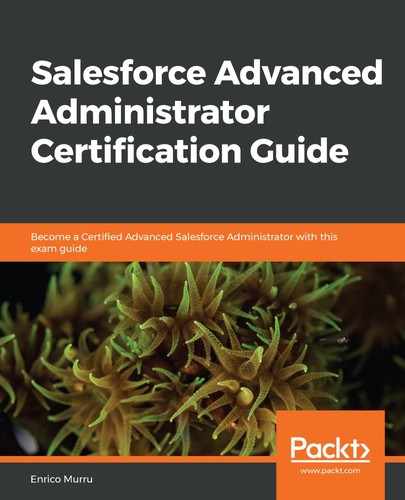Data quality is one of the key factors for any company because it ensures that business strategies rely on accurate information (you know exactly where you are and where you want to go).
In the previous chapters, we learned some ways to ensure data quality:
- Using data access configurations to grant proper access to records (avoiding unauthorized access to sensible information)
- Using validation rules to keep coherence
- Using picklist fields to ensure proper field completion
- Using custom relations to correlate data
But there is another platform feature that can be of great help with data accuracy: duplicate management. This feature applies to accounts, contacts, and leads (but also custom objects), and is meant to limit the amount of duplicate records by our sales team.
Let's say a big event is hosted at a local business center and our company has booked a booth (like companies do at Dreamforce). Our sales reps collect leads on the field using the Salesforce application from their smartphone. They meet lots of people, and it's impossible for them to remember whether they already met the same company/lead.
With duplicate management, we can allow them to spot whether a lead or account has already been added to our CRM and even whether they have the permission to merge these duplicates into a single entity (they may have got different information about a company or lead at different events; by merging, they create a more accurate record).
Let's see how this feature works.
If an org is created after summer 2017, the standard duplicate rules are activated by default for accounts, contacts, and leads. If you need a person account, the rules must be activated after the person account feature is enabled on your org.
